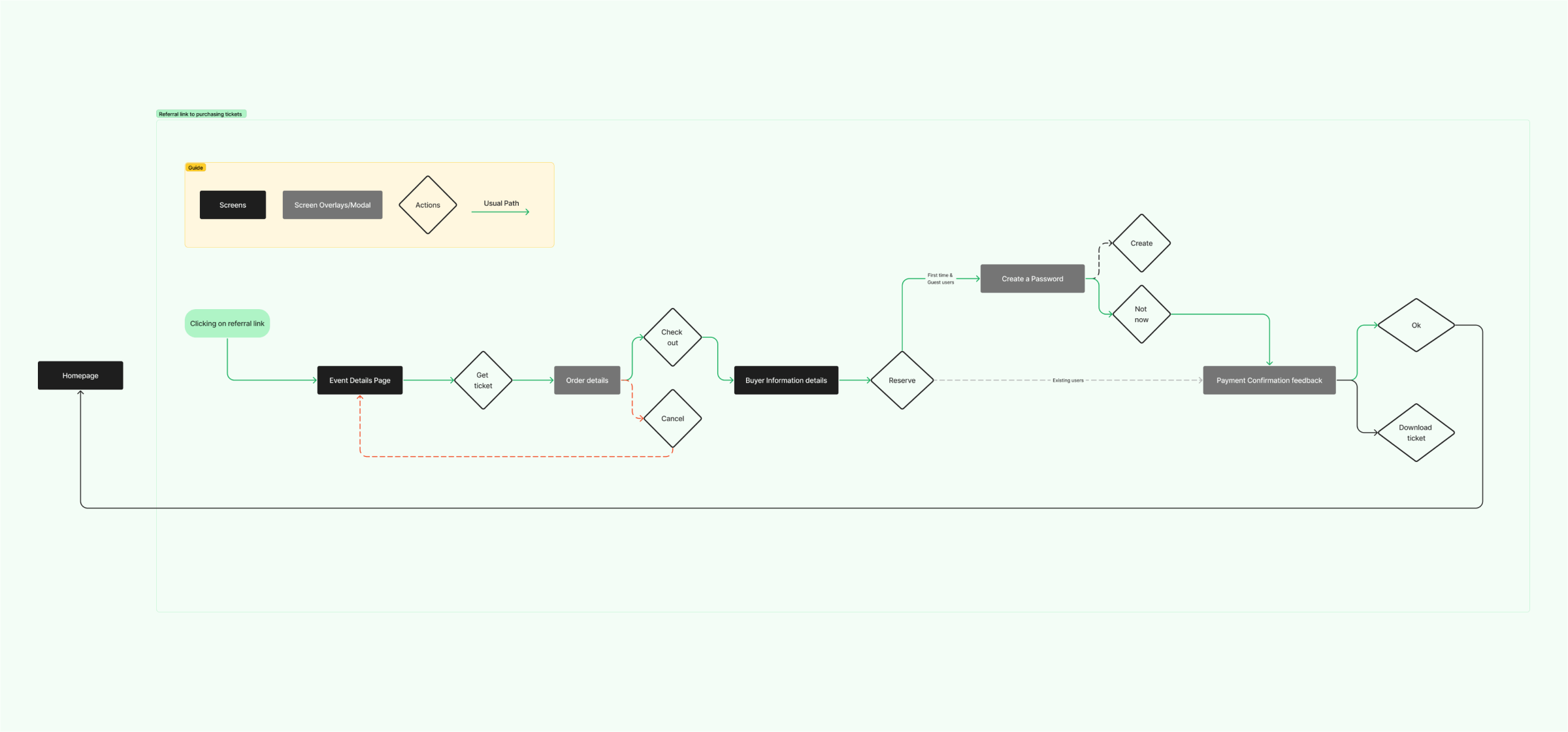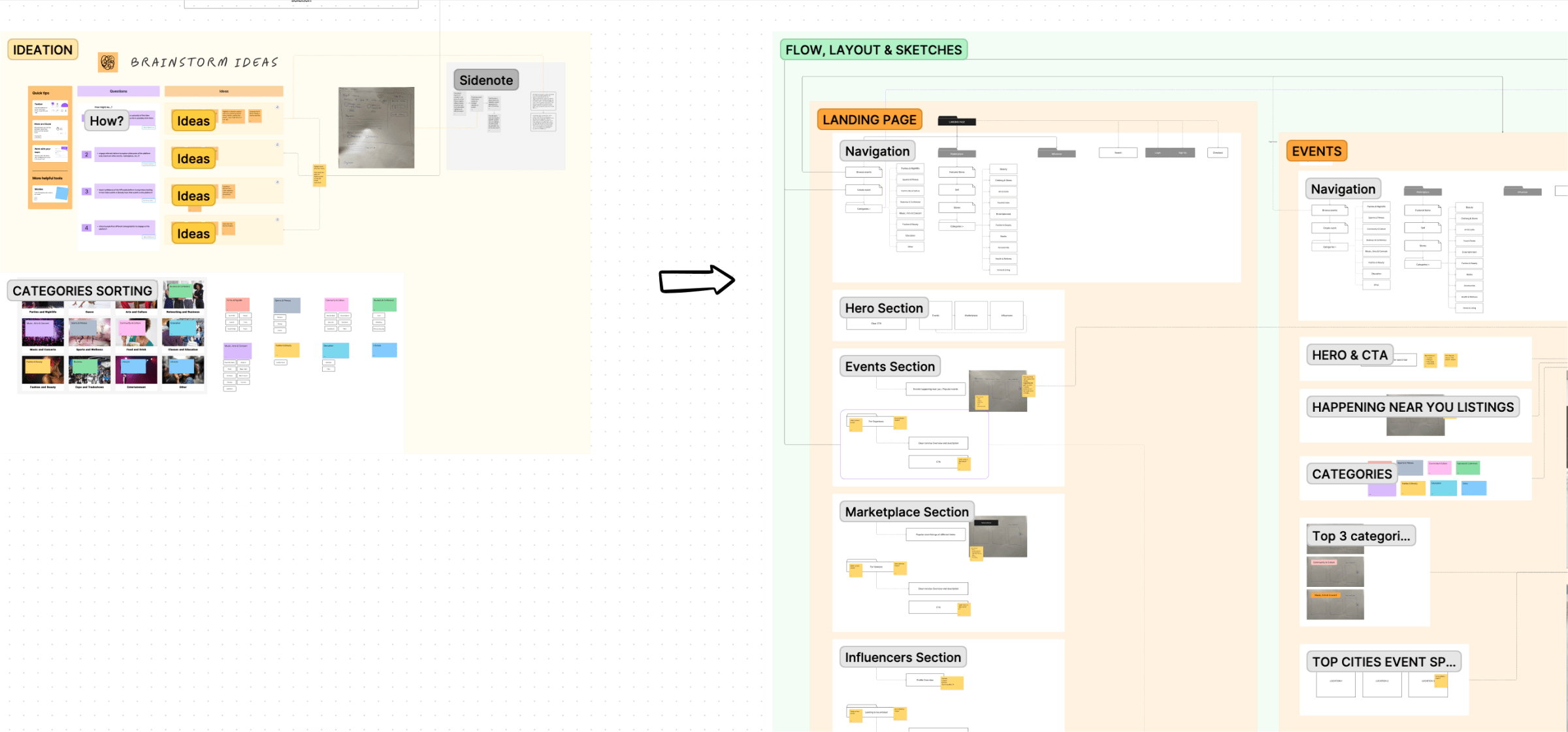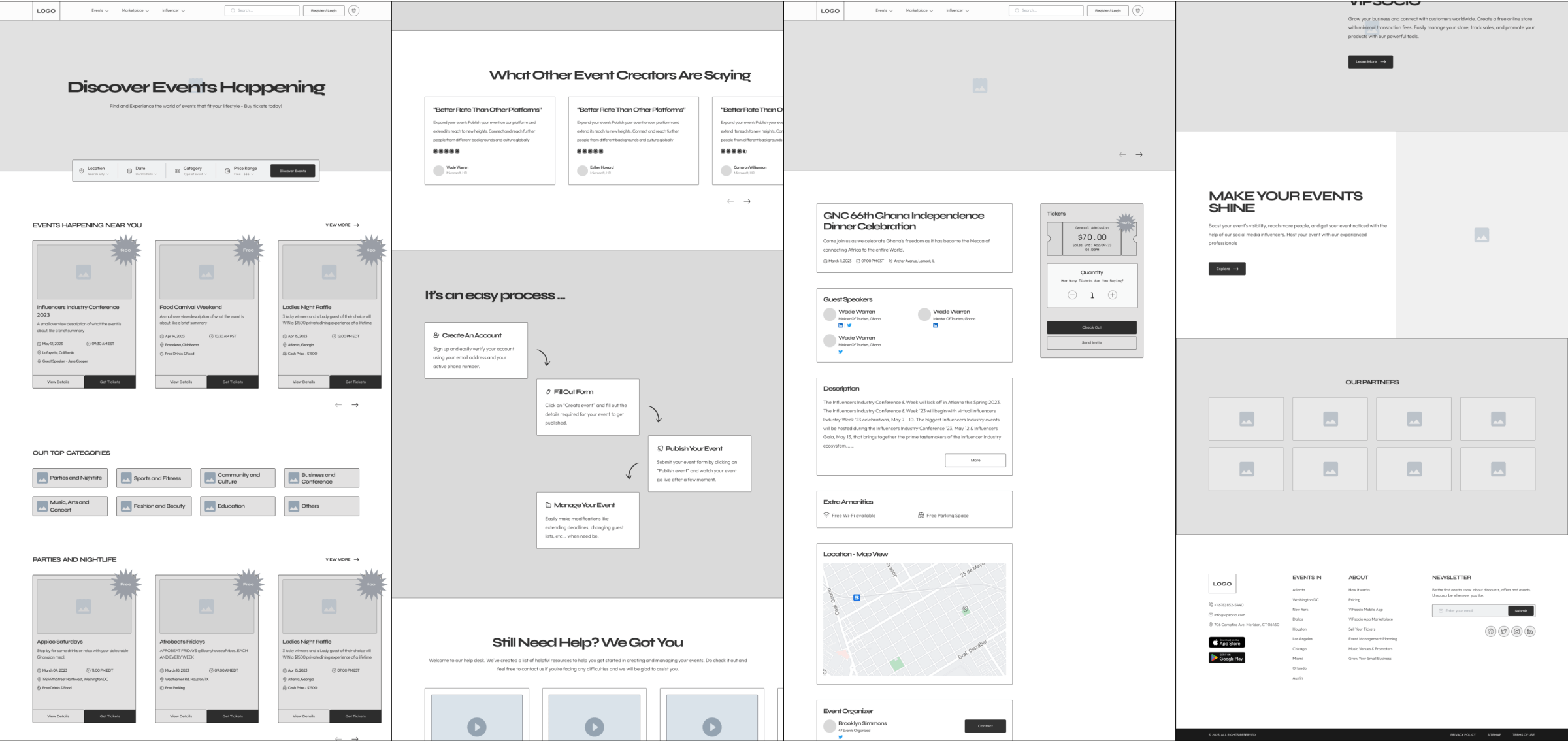An events ticketing platform, marketplace and event related services hub.

UX Design, Proposal & Consultancy
March 2023
Website
Pen & Paper, FigJam, Figma
Testing results indicated a 75% increase in users exploring more of the website after ticket purchase. The second meeting successfully gained stakeholders' buy-in, but the final meeting did not achieve the same.

The first of three meetings that took place. We met for an hour to discuss the site's problem, goals, and success criteria for a redesign. The conversation was recorded, I transcribed most of it and then sorted into different topics for easy review.


I broke down the problem statement into four parts, leveraged research data and inductive reasoning to generate ideas for each part with some ideas being capable of solving multiple problems.
After multiple checks and assessments, I reduced the event categories from twelve items to eight, and included sub-categories for better refinement.
Then in order to reduce the overwhelming clutter and lack of white space, a restructure of the information architecture and flow was needed to minimise distractions and group related elements for better organisation.


By looking at stakeholder examples and curated designs from multiple sources I developed paper sketches, then wireframes to visualise the new design flow.
Even though it wasn’t fully complete at the time, I made just enough screens to prepare for the second meeting.




Below is a preview of the proposed ticket buying process in comparison with the old, featuring updated CTA labels that prompt users to discover more of the platform.

Underwhelming! The meeting didn't have the same impact as before. I carried on from the previous meeting, walking stakeholders through my thought process and presenting some data to support my proposed visual design direction. I demonstrated the ease of changing certain aspects; like reverting back to the original colour.
Unfortunately, it fell short and the visual redesign wasn't considered modern enough to proceed.
In the second meeting, we briefly discussed the potential success of the proposal. The plan involved testing the new design with event organisers and users to gather feedback before implementing and gradually improving it.
I still conducted guerrilla testing with people, using the existing design as a benchmark and then introducing the newly proposed design to validate my decisions and measure improvements:
The overall results were highly positive, indicating the significant impact the redesign could have had if implemented.
In retrospect, this redesign proposal encapsulates a journey marked by resilience and continuous learning. Acknowledging that outcomes can be victories or valuable lessons, I recognize the potential benefits of incorporating quick user tests and maintaining design consistency.
The project served as a crucible for refining my decision-making and critical thinking skills. Navigating tight deadlines and limited information unveiled insights into effective prioritization. Ultimately, this experience highlights the pivotal role of research, iterative design, and usability testing in driving impactful improvements.
Moving forward, the lessons learned from this study serve as a foundation for continued improvement and innovation in creating meaningful and intuitive user experiences.